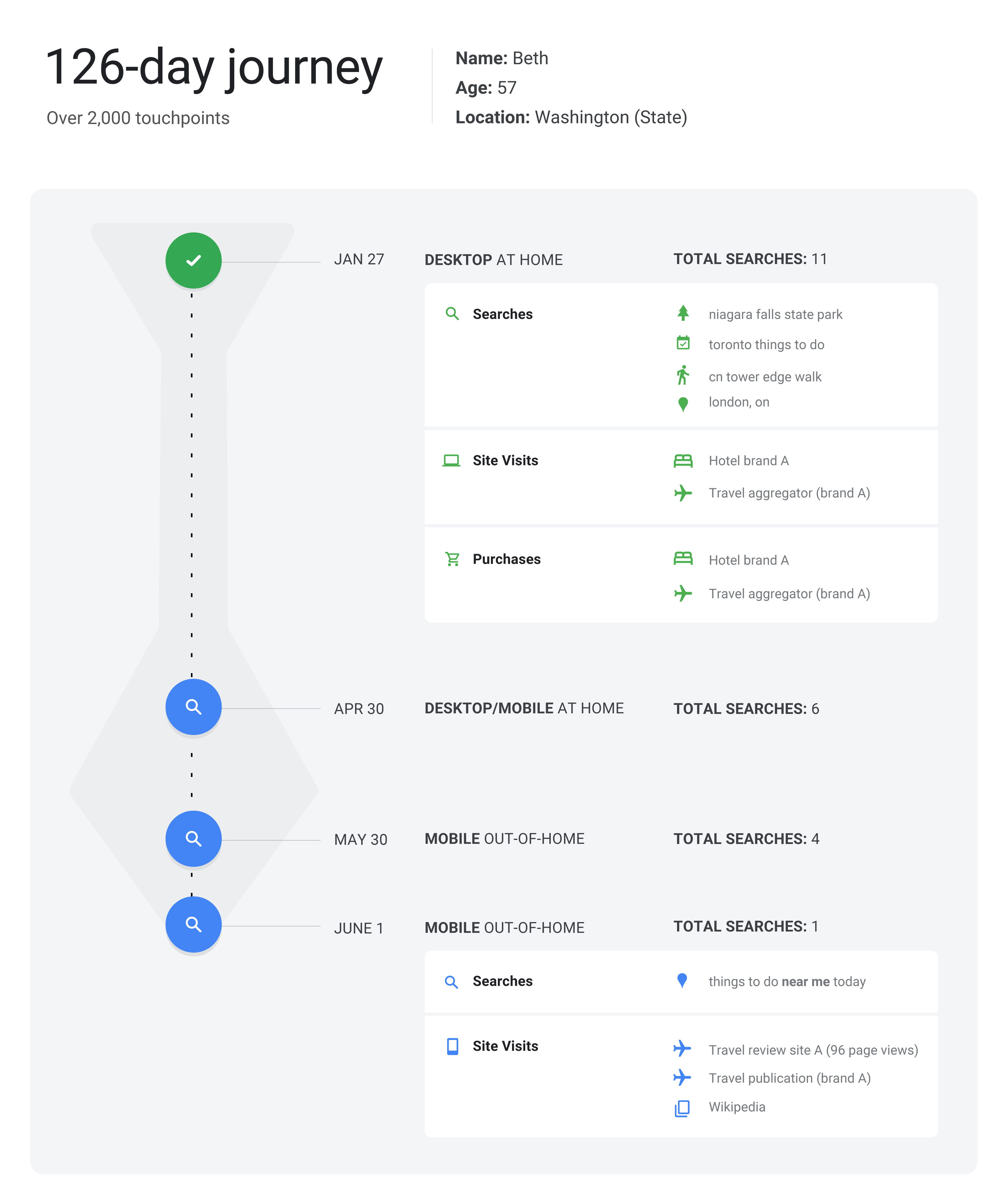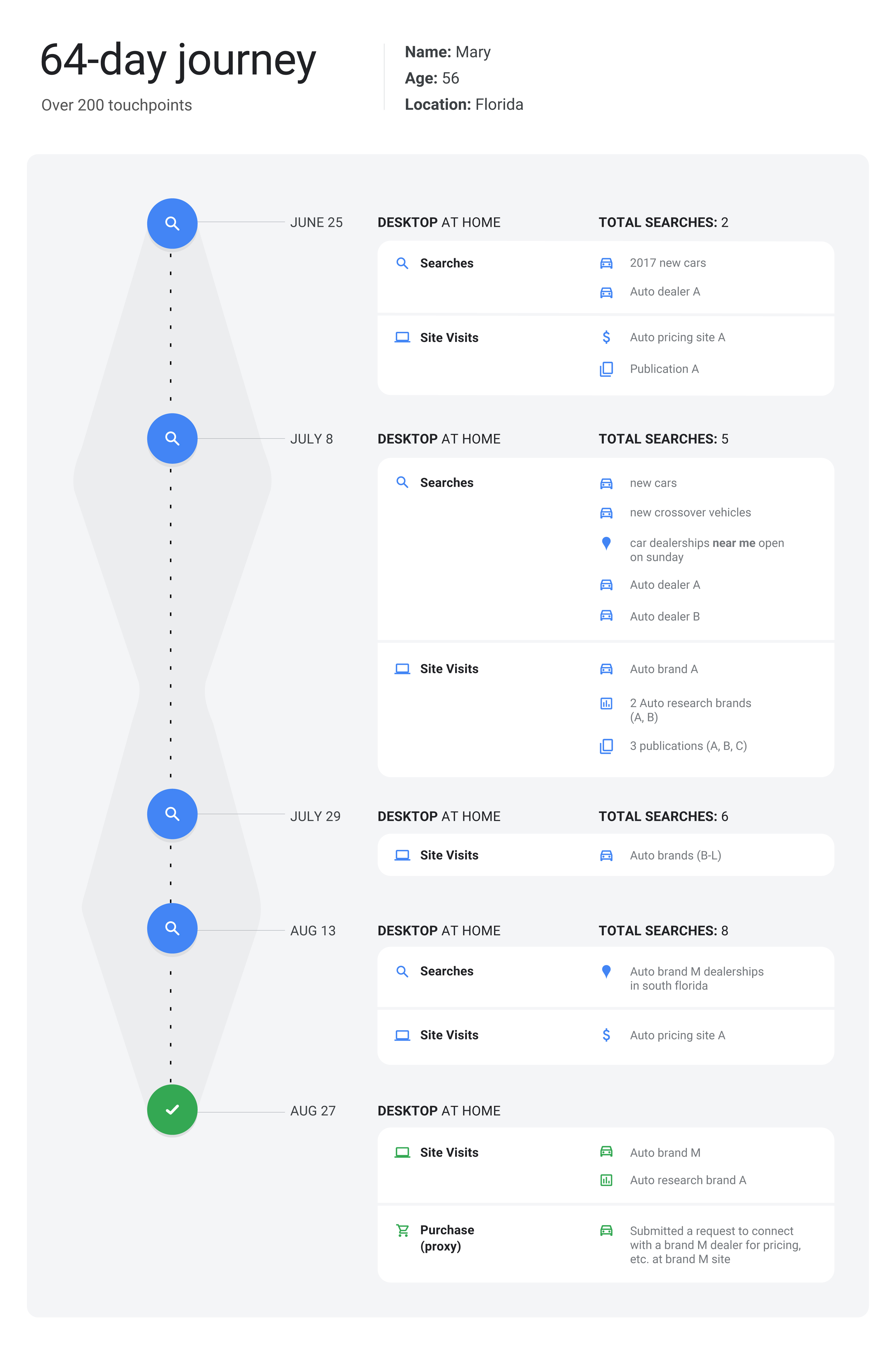Marketers invest a lot of money, time, and resources in an attempt to decipher and anticipate consumer intent. A key to understanding that intent is getting at the underlying needs that drive it in the first place.
Search would seem an obvious place to start. After all, people are literally typing their needs into a search field. That’s why we teamed up with Kantar and surveyed more than 4,000 people in the U.S. to understand the connection between consumers’ needs and their search behaviors. We really wanted to get at the emotional state behind the needs, to see how and if search behavior was connected to the six canonical needs of Kantar’s NeedScope: “surprise me,” “help me,” “reassure me,” “educate me,” “impress me,” and “thrill me.”
Search behavior, we discovered, is indeed driven by all six needs — and those needs occur across all categories. It turns out that the emotional motivation driving a particular search is shaped by not only the category the person is searching for, but also where they are in their journey. So we dug deeper and looked at how needs and emotions play out in actual consumer journeys.
In addition to partnering with Kantar, we worked with Verto Analytics to learn more about people’s behaviors as they move toward a purchase. All respondents opted-in to participate in the research with both partners.
Shoppers’ needs and emotions are unique
“Near me” is a common phrase that pops up in searches across categories. Whether at home or away, shopping for something small or large, people often want to know the closest options for activities, services, and stores.
We looked at two women in their 50s who were shopping in entirely different categories, one in travel and one in auto, both of whom used the phrase “near me.”
Beth’s travel journey1

Our travel searcher, let’s call her “Beth,” had a journey made up of multiple conversions with over 2,000 touchpoints. But we focused on a secondary journey involving a trip to Niagara Falls, because it included interesting search behavior after she’d arrived at her destination.
Six months prior to her trip, Beth started using search to research hotels and points of interest. Once at Niagara Falls, she searched for “things to do near me today.” This tracks with the thrill-me need state. We’ve found these searches are typically brief, using a few words, with minimal use of the back button. Beth is clearly seeking inspiration for things to do in the area, since her search was followed by more than 90 page views at a travel review site related to activities and attractions in London, Ontario. Travel-related, thrill-me-driven searches are also more likely to be carried out on mobile. In fact, in another travel study, we found that almost half of experiences bookings — 48% — are happening once travelers arrive at their destination. And the majority of those in-destination searches happen on mobile.2
Mary’s auto journey3

Meanwhile, our auto searcher, we’ll call her “Mary,” was on the hunt for a new SUV. She did a considerable amount of research. In a single day, she researched seven SUV brands. After she appeared to choose a particular brand, she submitted a request to connect with a local dealer for pricing.
Mary also used “near me” during her search, specifically for “car dealerships near me open on sunday.”
Interestingly, this was an upper-funnel search that occurred almost six months ahead of submitting a request to connect with the local dealer. The need state behind this “near me” search is most likely to be reassure me. Mary wanted to be sure that a dealership would be open when she needed it to be. It also indicates that, for auto shoppers, dealer visits aren’t necessarily lower-funnel activities — these visits occur throughout the journey. It’s worth noting that 62% of car shoppers continue to research while on the dealer lot.4
Avoid one-size-fits-all content
These two shoppers aren’t unique. Outside these two specific journeys, our NeedScope data shows that travel searches including the phrase “near me” are more likely to be associated with the thrill-me need state, whereas auto “near me” searches are more likely to be related to reassure me.
This means that marketers should tailor messaging to the need being expressed in that moment. So a travel marketer’s content designed to respond to a “near me” search driven by a thrill-me need state should be different from content designed for someone who is in the planning stages, likely driven by the educate-me need state.
While our auto shopper wanted to be reassured, 16% of the needs driving auto searches fall into the impress-me need state, while 31% fall into educate me.5 Each of these needs requires a different type of messaging.
Marketers versed in need-state research use people’s needs to determine everything from product packaging to the types of spokespeople who appear in their ads. They can do the same for search. Olay did just that and found success. Rather than simply promoting products in search, the brand’s ad copy directly addressed the person’s search needs and directed them to a page that offered detailed information and solutions.
Brands should be widening their focus beyond branded search terms and terms that are always associated with their category. After getting to know the need states, they should think through which keywords would signal which states for their category. Then serve multiple pieces of ad copy and destination links to see which ones drive better outcomes.
Successful marketing should aim to fulfill people’s needs each step of the way. But marketers can't assume that one-size-fits-all content will work. By understanding the emotions driving people’s actions, marketers can anticipate the needs that drive their searches — and address them.







